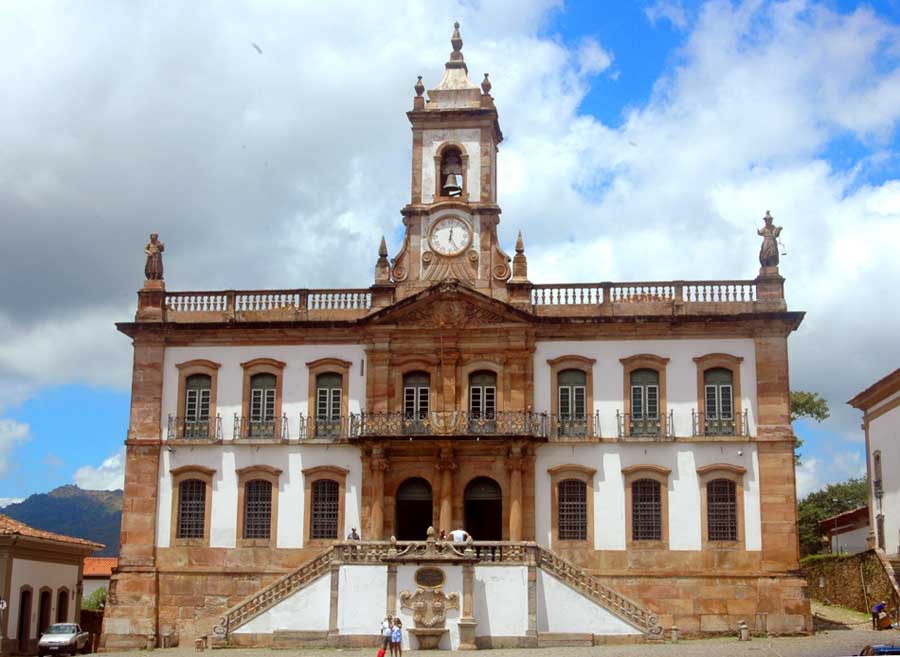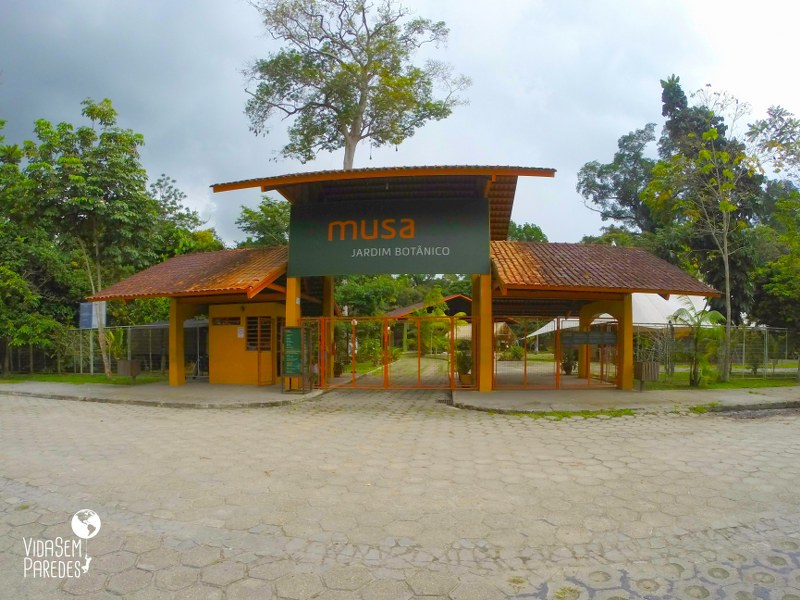
The 10 museums in Brazil to learn more about history and art
For a variety of people, going to the museum is not just seen as simple leisure. It is, in fact, an opportunity to learn and look at the past, present and future of a society in a different way.
In a country as large and diverse as Brazil, museums have a lot to teach about the nation's territorial, historical and cultural background.
Information about its collections and characteristics are based on the official websites of each museum, and the state or municipality to which they belong. Check the list below:
1. Afro-Brazilian Museum, in Salvador

Located in the historic center of Salvador, Bahia, this museum was founded in 1982 with the aim of spreading African and Afro-Brazilian culture, having more than 1,100 pieces in its collection.
Those who go to the Afro-Brazilian Museum will find collections of plastic arts, religious artifacts linked to Candomblé, capoeira instruments, sculptures, masks and other items that rescue the history and culture of African and Afro-descendant peoples.
2. Historical Museum of Brasilia
/i.s3.glbimg.com/v1/AUTH_59edd422c0c84a879bd37670ae4f538a/internal_photos/bs/2021/M/1/spWksWTaOGle8irEBBJw/51105709193-b23c1d28ee-k.jpg)
Designed by architect Oscar Niemeyer, the Museu Histórico de Brasília was opened in 1960 – on the same day as the inauguration of the federal capital – representing a historic landmark.
The institution has a permanent exhibition with historical inscriptions that refer to the construction of Brasília, considered a great architectural feat. Of all the sights in the capital, this is one that deserves to be visited by anyone interested in history.
3. Museum of Art of São Paulo Assis Chateaubriand, in São Paulo

The Museu de Arte de São Paulo Assis Chateaubriand – known by the acronym MASP – is perhaps the most famous in all of Brazil, having been founded in 1947.
Currently, it brings together around 10,000 works, including works by some of the most famous artists in the world, such as Vincent van Gogh, Pablo Picasso, Claude Monet, among others.
Furthermore, the Masp building, located on Avenida Paulista, has become a postcard of the city of São Paulo due to its architectural beauty.
4. Museum of Indigenous Cultures, in São Paulo
To know the history of Brazil, it is necessary to know more about the original peoples.
In the city of São Paulo, it is possible to visit the Museum of Indigenous Cultures, whose management is shared with representatives of different indigenous peoples, says the official website of the institution.
In addition to the items on display, the museum also stands out for organizing various events related to art, culture and indigenous experience.
5. Ipiranga Museum, in São Paulo

Built between 1885 and 1990, the Ipiranga Museum underwent a process of restoration and modernization, reopening to the public in 2022, after being closed for nine years.
The collection has more than 3,000 items, such as paintings, sculptures, objects, furniture, coins, photographs and documents. Most are dated to the 19th and 20th centuries, but there are older items that date back to Brazil's colonial period.
The highlight of the collection is the painting “Independence or Death” (1888), by the Brazilian artist Pedro Américo, one of the most emblematic works of the country.
6. Inconfidência Museum, in Ouro Preto, Minas Gerais

The Museu da Inconfidência is an obligatory stop in the Minas Gerais town of Ouro Preto, gathering important objects and historical documents about the revolutionary movement of the 18th century, which had Tiradentes as its best known member.
In a special room, called the Panteão dos Inconfidentes, are the remains of some of the participants of the Inconfidência Mineira. The museum also has works of sacred art from the 18th and 19th centuries, sculptures by Aleijadinho and paintings by Mestre Ataíde.
7. Inhotim Institute, in Brumadinho, Minas Gerais

In Brumadinho, also in Minas Gerais, visitors can visit the Inhotim Institute, a contemporary art museum with more than 1,862 works by 280 artists. A difference is that the pieces are displayed outdoors.
The Institute also has a botanical garden with over 4,300 rare botanical species from all continents. In other words, it is an experience that combines art, culture and nature at the same time.
8. Oscar Niemeyer Museum, in Curitiba

The Oscar Niemeyer Museum is popularly known as the “Museum of the Eye”. The reason is an annex whose shape resembles precisely the organ responsible for vision and which was designed by the famous architect who gives the space its name.
In addition to the exhibitions it frequently hosts, the Oscar Niemeyer Museum has a rich collection in the areas of visual arts, design, architecture, among others.
9. Floriano Peixoto Palace Museum, in Maceió

Located in an imposing historic building, the Palácio Floriano Peixoto Museum is the former official seat of the government of Alagoas. The structure was turned into a museum 17 years ago, in 2006.
The collection includes works of art, decorations and furniture from the 19th and 20th centuries that allow for a true “travel in time”. Due to its beauty, the building is also commonly used for photo shoots.
10. Museum of the Amazon, in Manaus
Focusing on the nature and culture of the Amazon region, the Museum of the Amazon was founded in 2009 and offers visitors a broad view of this very important part of Brazil and the world.
Among the highlights of the institution are the trails through the Forest Reserve that allow you to see and hear the enormous diversity of animals, leaves, plants and trees. There are also nurseries with native species and temporary exhibitions that bring, for example, photographs of the indigenous people of the Amazon.



- April 23, 2025
Gallery Of Humor Drawing By Kevin Kallaugher - England



- April 24, 2025
Gallery of Artworks by Oscar Olivares – Venezuela

- April 23, 2025
From Canvas to Film: Visual Art in the Film Industry


- April 23, 2025
Porto hosts ‘Art for Palestine’



- April 23, 2025
Gallery Of Humor Drawing By Kevin Kallaugher - England



- April 24, 2025
Gallery of Artworks by Oscar Olivares – Venezuela

- April 23, 2025
From Canvas to Film: Visual Art in the …

- April 22, 2025
How can AI help in artistic logo design?

- April 22, 2025
The Role of AI in the Analysis and Simu…

- April 21, 2025
Graphic Art in the Digital Age: A Trans…

- April 20, 2025
The Influence of Technology on the Revo…

- April 19, 2025
Analysis of Picasso's Artistic Style an…

- April 19, 2025
Artificial Intelligence and the Future …

- April 17, 2025
12 Houses with Art Studios in Latin Ame…

- April 16, 2025
Famous 20th-Century Painters and Their …

- April 14, 2025
Analysis of Artistic Works Created with…

- April 13, 2025
From Digital Art to Contemporary Art

- April 13, 2025
The Expansion of Photography

- April 12, 2025
When is photography considered art?

- April 10, 2025
Impact of AI on the Diversity of Artist…

- April 10, 2025
How can AI enhance artistic creativity?

- April 09, 2025
The Impact of Artificial Intelligence o…

- April 08, 2025
Latin American art, a goldmine of oppor…

- April 07, 2025
Contemporary Art in Brazil: Between the…

- April 07, 2025
Mexican Muralism: Art for the People

- April 06, 2025
History of graphic art in Brazil

- August 29, 2023
The history of Bolivian art

- February 19, 2024
Analysis and meaning of Van Gogh's Star…

- January 28, 2024
Culture and Art in Argentina

- September 25, 2023
What is the importance of art in human …

- September 23, 2023
What is paint?

- August 10, 2023
14 questions and answers about the art …

- August 30, 2023
First artistic manifestations

- August 23, 2023
The 11 types of art and their meanings

- September 23, 2023
History of painting

- August 16, 2023
The 15 greatest painters in art history

- March 26, 2024
The importance of technology in art1

- April 06, 2024
History of visual arts in Ecuador

- March 26, 2024
Cultural identity and its impact on art…

- January 31, 2024
Examples of Street Art – Urban Art

- January 20, 2024
What is the relationship between art an…

- April 07, 2024
Graffiti in Latin American culture

- October 21, 2023
Contemporary art after the Second World…

- August 25, 2024
A Comprehensive Analysis of the Cartoon…

- September 23, 2023
Painting characteristics

- August 08, 2023
Cultural Diversity in Latin American Art

- February 19, 2024
Analysis and meaning of Van Gogh's Star…

- August 13, 2023
9 Latino painters and their great contr…

- August 29, 2023
The history of Bolivian art

- August 10, 2023
14 questions and answers about the art …

- January 28, 2024
Culture and Art in Argentina

- August 23, 2023
The 11 types of art and their meanings

- November 06, 2023
5 Latin American artists and their works

- September 23, 2023
Painting characteristics

- August 27, 2023
15 main works of Van Gogh

- September 23, 2023
What is paint?

- September 25, 2023
What is the importance of art in human …

- August 30, 2023
First artistic manifestations

- January 20, 2024
What is the relationship between art an…

- December 18, 2023
10 iconic works by Oscar Niemeyer, geni…

- January 12, 2024
10 most beautiful statues and sculpture…

- October 30, 2023
Characteristics of Contemporary Art

- March 26, 2024
Cultural identity and its impact on art…

- August 22, 2023
What are Plastic Arts?

- April 16, 2024
The most important painters of Latin Am…

- October 11, 2023


